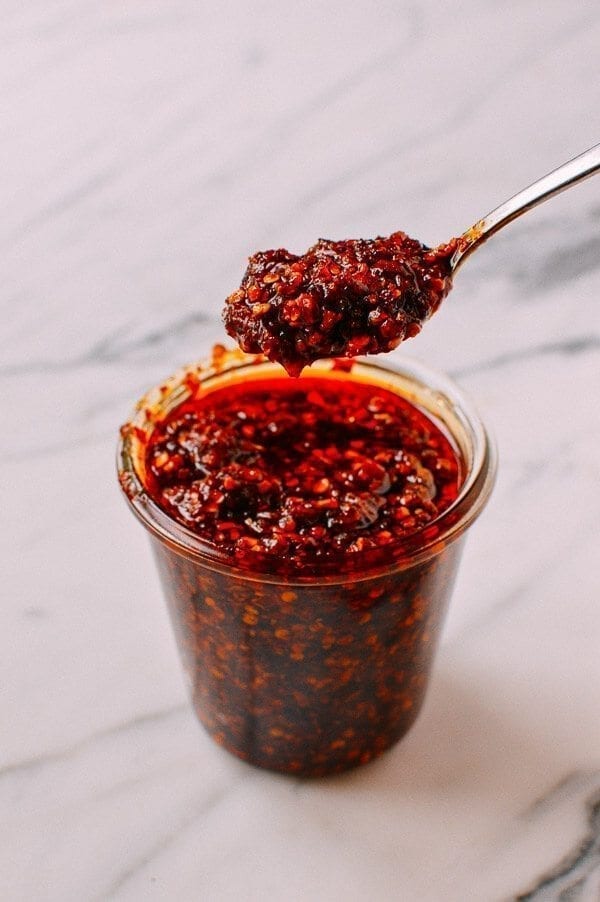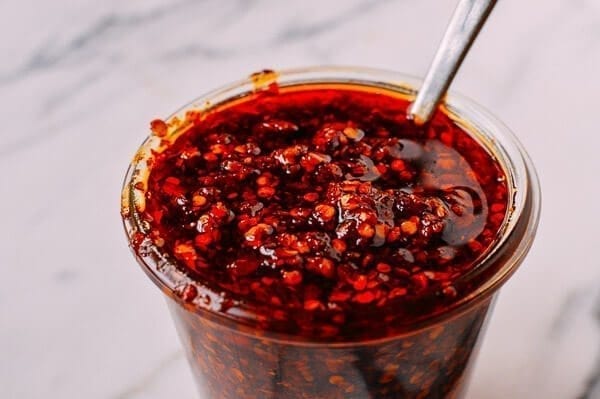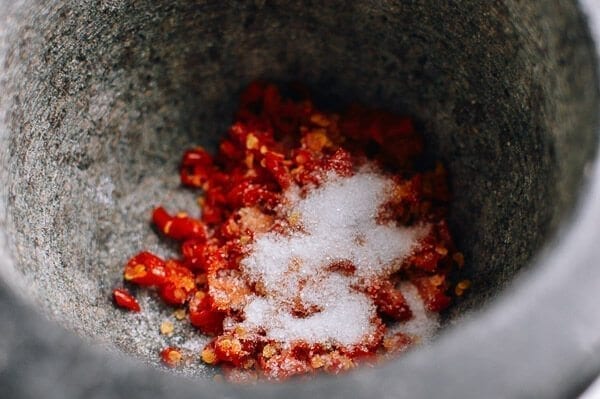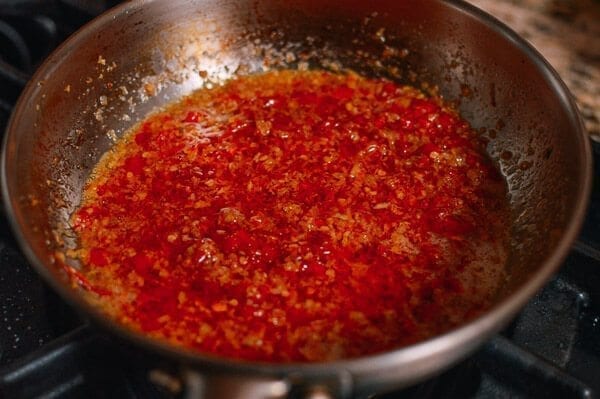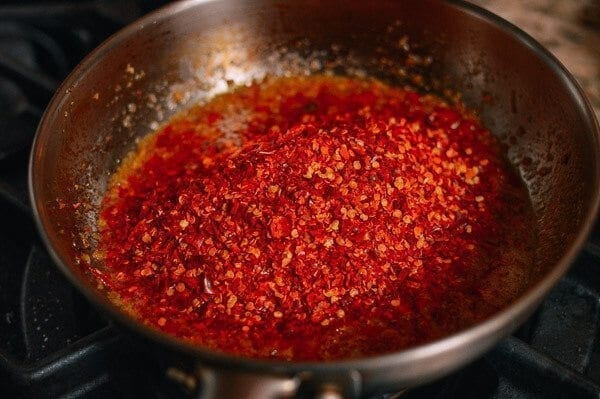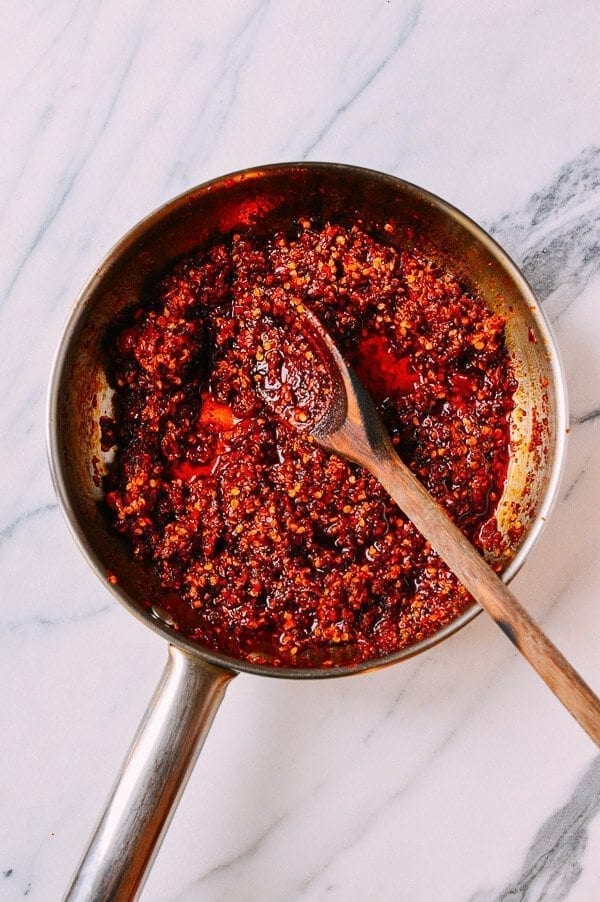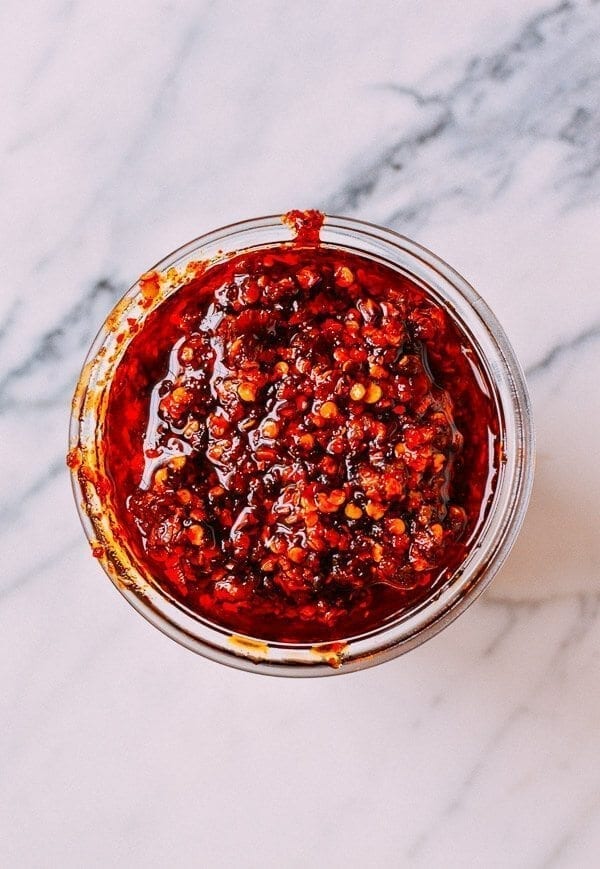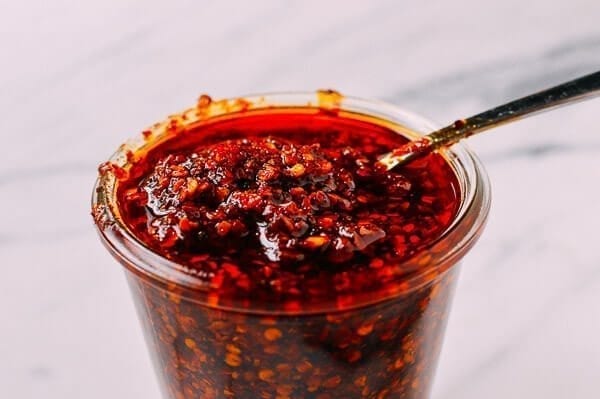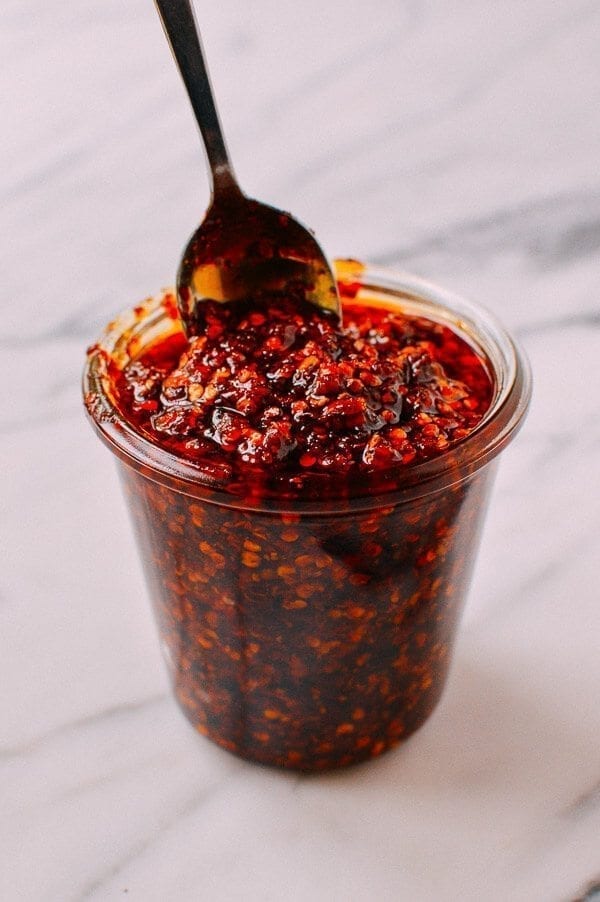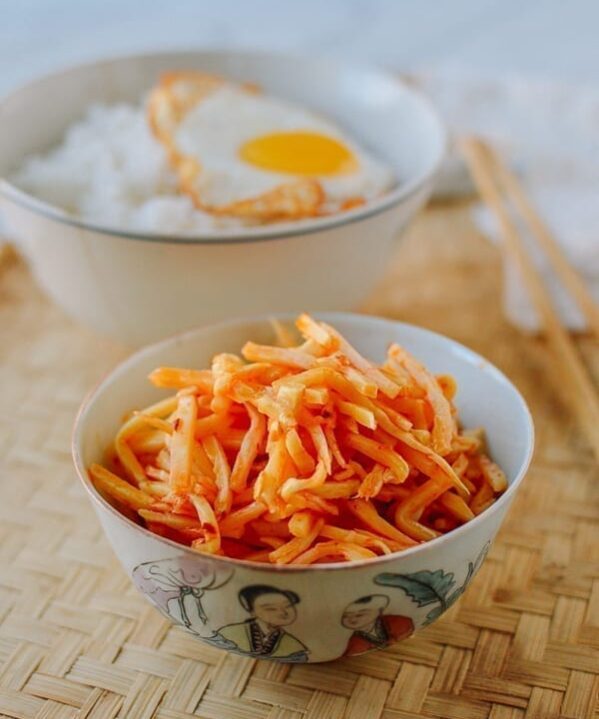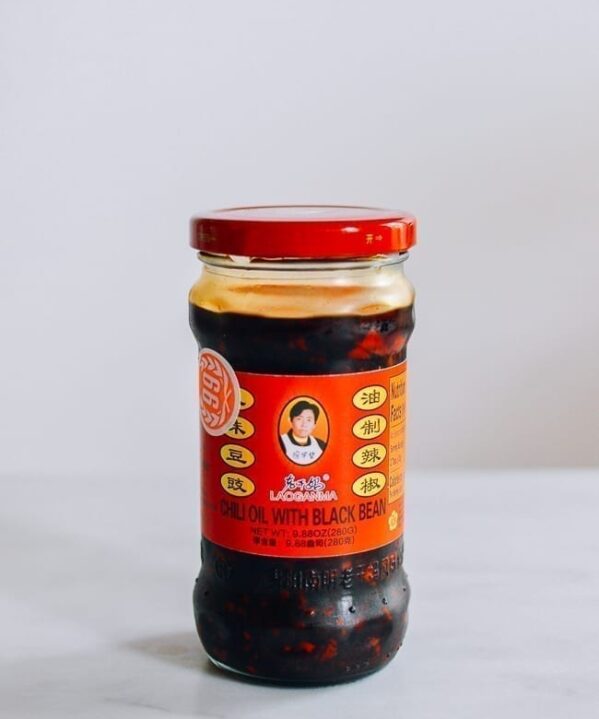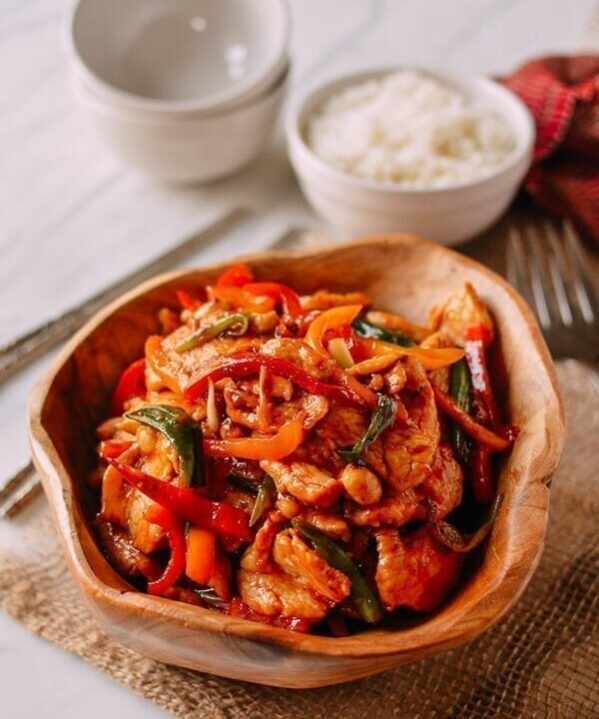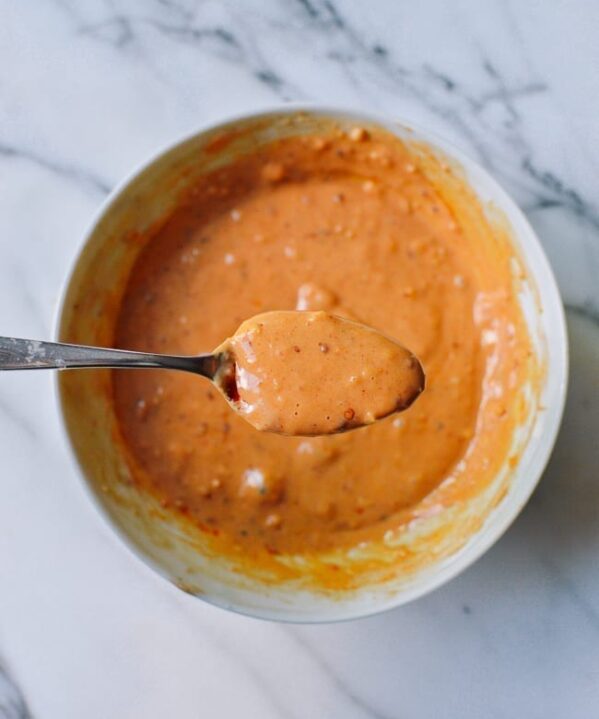As you’ve undoubtedly seen, we’ve returned, friends, to the mystical realm of Chinese condiments—i.e. SAUCE. Now that we’ve conquered the elusive Homemade Chili Oil and Ginger Scallion Oil (I believe the terms “elixir of life” and “condiment of the gods” were bandied about by some…), we can move on to more complicated and lesser known sauces. One such concoction is Chiu Chow sauce, which, in a nutshell, is chili oil gone hog wild. Those folks in Chiu Chow China really know what they’re doing!
Developing This Recipe
First, I should say that recipes for Chiu Chow chili sauce are rather limited. A quick Google search rendered relatively few findings—just a handful of variations that left me less than satisfied. So, I turned to a key source in any home cook’s arsenal—the label on the store-bought version.
Our gold standard for study? Lee Kum Kee’s version (if you’re just too lazy to read on, you can buy a jar here). A close study of various ingredients—some more chemical than others—brought me back to a core list of ingredients…
The most vital of those ingredients is the Golden Goose Egg Secret #1 of making delicious Chiu Chow sauce at home: garlic. Lots and lots of it—enough to ward off potential dates within a 10-mile radius. Enough to scare the vampires out of your kids’ nightmares. Yes. That much.
Golden Goose Egg Secret #2 of making delicious Chiu Chow sauce at home is that the key salt component and distinctive flavor profile comes from the addition of soy sauce. Shockingly unorthodox, I know, but it adds that signature dark color and rich, umami flavor.
The New Number 1 Condiment
It’s gotten to the point that Sarah and I have split into 2 sauce factions—Sarah remains determinedly loyal to “lady sauce” our old standby, whereas I have cast caution to the wind and pledged allegiance to this amazingly delicious, garlicky, spicy Chiu Chow oil.
For long-time readers of our blog, yes, this sauce is THAT powerful. “The lady” is no longer my number one main homie. It’s this delightful concoction of garlic, chili, and soy.
I think that by now I’ve probably convinced you of it’s awesomeness, so let’s get started, shall we?
Recipe Instructions
Slice the fresh chili peppers thinly. Place into a mortar and pestle along with 2 teaspoons salt. Grind and mix thoroughly with the pestle. You don’t need to form a paste, just break down the peppers slightly.
This is my shortcut for salt-preserved chilies. I’m not really sure if it actually approximates salt-preserved chilies, but it does add really great spice and texture! Set aside and prepare the rest of your ingredients.
Mince the garlic. I used a garlic press; a food processor also works well. Then again, nothing wrong with old-fashioned elbow grease!
Heat ½ cup of your oil in a small saucepan over medium heat. Add the garlic. Stir and let fry gently until the garlic turns golden yellow in color. However, it should NOT become crisp or fry intensely at all.
You can turn the heat up and down between medium-low and medium-high to slow or expedite the process as need be. If you want to be more cautious about it, the ideal heat should be between 225 to 250 degrees F and you can use a candy thermometer to monitor the oil temperature.
When the garlic is ready (about 30 minutes later, give or take 10 minutes depending on how cautious you’re being), add the salted chilies. Stir and let fry gently for another 5-10 minutes, again watching closely so as not to burn the oil and spices.
Next, add the last ¾ cups of oil to the saucepan to heat through. Too much oil early on in the process makes it more difficult to evenly fry the garlic and chilies, which is why we started with only 1/2 cup.
Now add your Sichuan chili flakes and sugar. Stir to combine.
Finish off with 2 tablespoons of light soy sauce, and you’ve got a delicious jar of homemade chiu chow oil! (Feel free to re-season with up to a teaspoon of additional salt if needed. You may want to wait until it’s cooled first to get a more accurate read on the flavor.)
Transfer to a clean jar. In our experience, the sauce stores well at the coldest part of the refrigerator (e.g., in the way back) for a good 2-3 months. And, of course, always dip into it with a clean spoon/chopsticks to preserve it. If there’s any foul smell or the sound of gas escaping when you crack it open, discard it. But we’re betting it doesn’t last past the 2-week mark!
Homemade Chiu Chow Chili Sauce Recipe
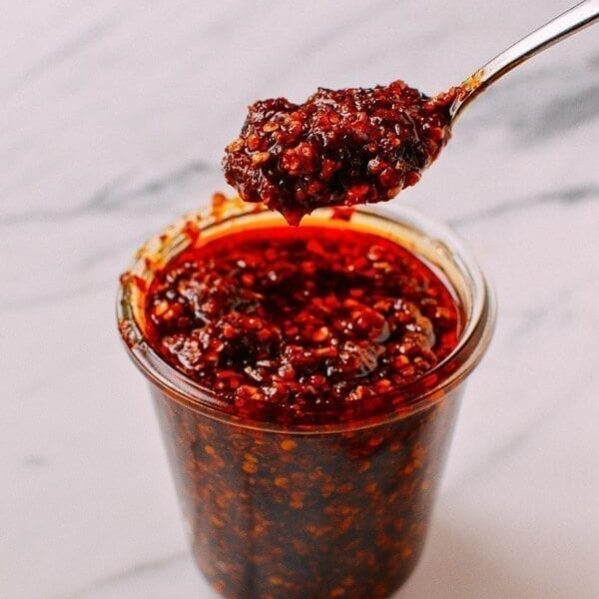
Ingredients
- 15 fresh chili peppers (e.g., Thai bird's eye chilies but adjust to taste / pepper type) (thinly sliced)
- 2 teaspoons salt (or to taste)
- 2 heads garlic (peeled)
- 1¼ cups neutral oil (like vegetable or canola)
- 1 cup Sichuan chili flakes
- ½ teaspoon sugar
- 2 tablespoons soy sauce
Instructions
- Slice the fresh chili peppers thinly. Place into a mortar and pestle along with 2 teaspoons salt. Grind and mix thoroughly with the pestle—you don't need to form a paste, just break down the peppers slightly. This is my shortcut for salt-preserved chilies. I'm not really sure if it actually approximates salt-preserved chilies, but it does add really great spice and texture! Set aside and prepare the rest of your ingredients.
- Mince the garlic. I used a garlic press; a food processor also works well. Then again, nothing wrong with old-fashioned elbow grease!
- Heat ½ cup of your oil in a small saucepan over medium heat. Add the garlic. Stir and let fry gently until the garlic turns golden yellow in color. The goal is to cook off the moisture and allow the garlic to soak up the oil—like a confit. It should NOT become crisp or fry intensely at all. You may need to reduce the heat to medium-low / low.
- When the garlic is ready (about 30 minutes later, give or take 10 minutes depending on how cautious you're being), add the salted chilies. Stir and let fry gently for another 5-10 minutes, again watching closely so as not to burn the oil and spices.
- Next, add the last ¾ cups of oil to the saucepan to heat through. Too much oil early on in the process makes it more difficult to evenly fry the garlic and chilies, which is why we started with only 1/2 cup.
- Now add your chili flakes and sugar. Stir to combine. Finish off with 2 tablespoons of soy sauce, and you've got a delicious jar of homemade chiu chow oil! (Feel free to re-season with up to a teaspoon of additional salt if needed. You may want to wait until it's cooled first to get a more accurate read on the flavor.)
- Transfer to a clean jar. In our experience, the sauce stores well at the coldest part of the refrigerator (e.g., in the way back) for a good 2-3 months. And, of course, always dip into it with a clean spoon/chopsticks to preserve it. If there's any foul smell or the sound of gas escaping when you crack it open, discard it. But we're betting it doesn't last past the 2-week mark!
